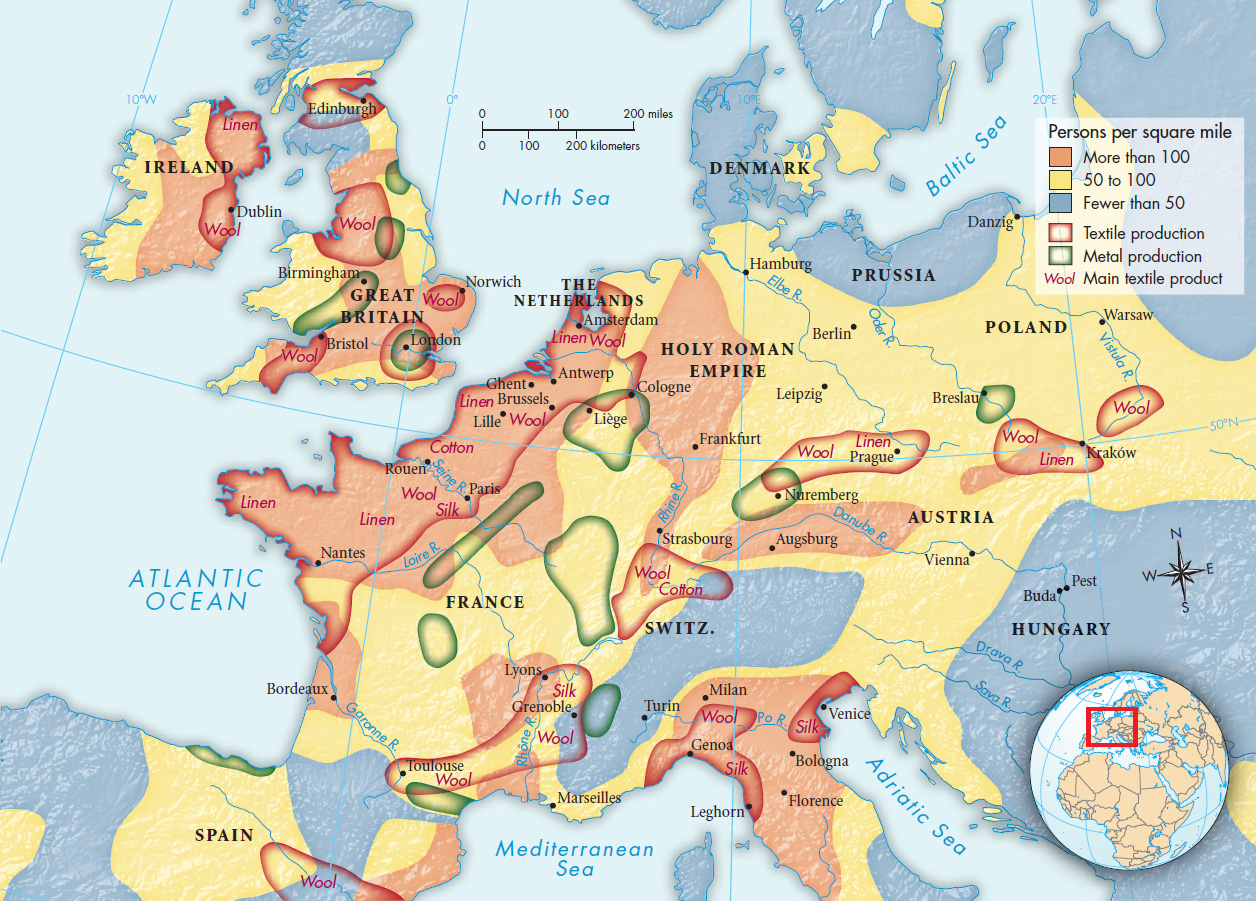A History of Western Society: Printed Page 549
A History of Western Society, Value Edition: Printed Page 559
The Putting-Out System
Cottage industry was often organized through the putting-out system. The two main participants in the putting-out system were the merchant capitalist and the rural worker. In this system, the merchant loaned, or “put out,” raw materials to cottage workers, who processed the raw materials in their own homes and returned the finished products to the merchant. There were endless variations on this basic relationship. Sometimes rural workers bought their own raw materials and worked as independent producers before they sold to the merchant. Sometimes whole families were involved in domestic industry; at other times the tasks were closely associated with one gender. Sometimes several workers toiled together to perform a complicated process in a workshop outside the home. The relative importance of earnings from the land and from industry varied greatly for handicraft workers, although industrial wages usually became more important for a given family with time.
As industries grew in scale and complexity, production was often broken into many stages. For example, a merchant would provide raw wool to one group of workers for spinning into thread. He would then pass the thread to another group of workers to be bleached, to another for dyeing, and to another for weaving into cloth. The merchant paid outworkers by the piece and proceeded to sell the finished product to regional, national, or international markets.
The putting-out system grew because it had competitive advantages. Underemployed labor was abundant, and poor peasants and landless laborers would work for low wages. Since production in the countryside was unregulated, workers and merchants could change procedures and experiment as they saw fit. Because workers did not need to meet rigid guild standards, cottage industry became capable of producing many kinds of goods. Textiles; all manner of knives, forks, and housewares; buttons and gloves; and clocks could be produced quite satisfactorily in the countryside. Although luxury goods for the rich, such as exquisite tapestries and fine porcelain, demanded special training, close supervision, and centralized workshops, the limited skills of rural industry were sufficient for everyday articles.
Rural manufacturing did not spread across Europe at an even rate. It developed most successfully in England, particularly for the spinning and weaving of woolen cloth. By 1500 half of England’s textiles were being produced in the countryside. By 1700 English industry was generally more rural than urban and heavily reliant on the putting-out system. Most continental countries, with the exception of Flanders and the Dutch Republic, developed rural industry more slowly. The latter part of the eighteenth century witnessed a remarkable expansion of rural industry in certain densely populated regions of continental Europe (Map 17.1).

MAPPING THE PAST
ANALYZING THE MAP What does this map suggest about the relationship between population density and the growth of textile production? What geographical characteristics seem to have played a role in encouraging this industry?
CONNECTIONS How would you account for the distribution of each type of cloth across Europe? Did metal production draw on different demographic and geographical conditions? Why do you think this was the case?